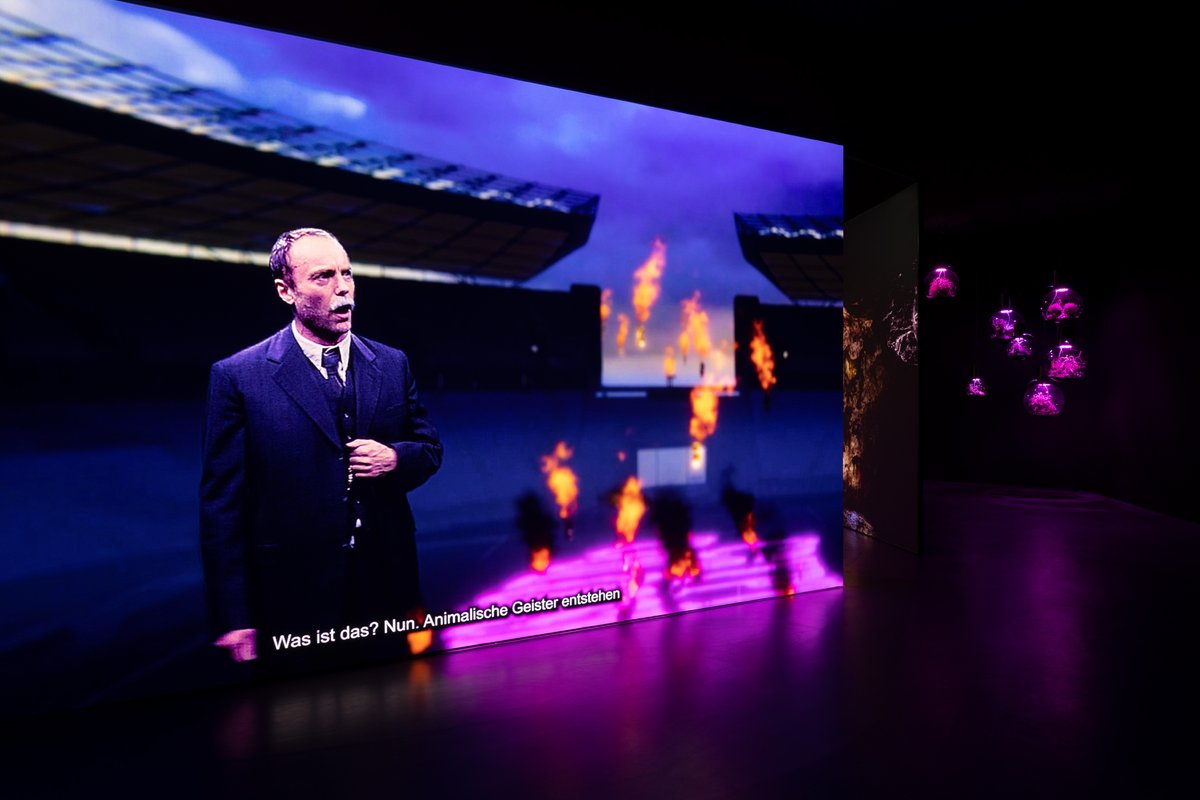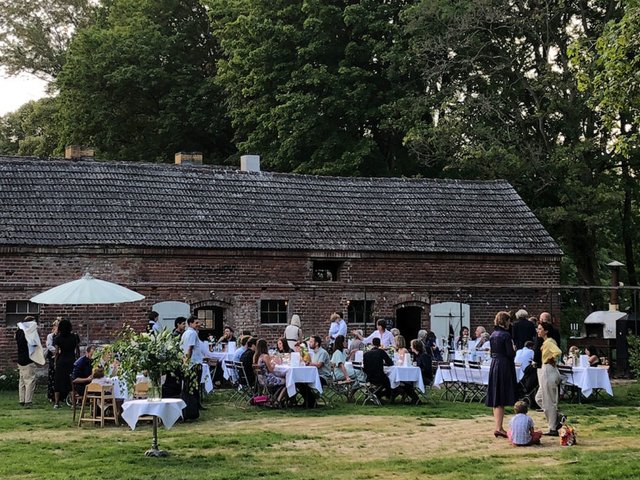Berlin remains one of the few Western art hubs without a major international fair, making its annual Gallery Weekend (GWB) a key market moment. The 19th edition (28-30 April) features 55 galleries, and coincides with a number of parallel programmes and non-commercial exhibitions. Here are six of the most noteworthy shows taking place across the city, from participating galleries to project spaces, a former power plant, and a moving car.
Hito Steyerl: Contemporary Cave Art, Esther Schipper, Potsdamer Str. 81e/3rd Floor, 10785, until 25 May
Hito Steyerl made headlines when she pulled her work from Documenta 15 amid its antisemitism and racism controversies. A site-specific iteration of the same video installation, Animal Spirits (2022), will now be exhibited at her debut solo show with Esther Schipper. The work, in classic Steyerl fashion, is a distinctive mix of historical footage, speculative fiction and musings on technological and economic futures, all interpolated with the artist's niche field research, specifically the effect of wolves on the ecology of northern Spain and the livelihood of local shepherds.
The exhibition also features a number of illuminated glass sculptures containing plant matter, which are programmed with sensors that react to the viewer's movement. These are being sold to fundraise for relief efforts following the recent earthquakes in Turkey and Syria. All proceeds from the sales of these sculptures will be donated to create a health centre in a women's village in Rojava, northern Syria.
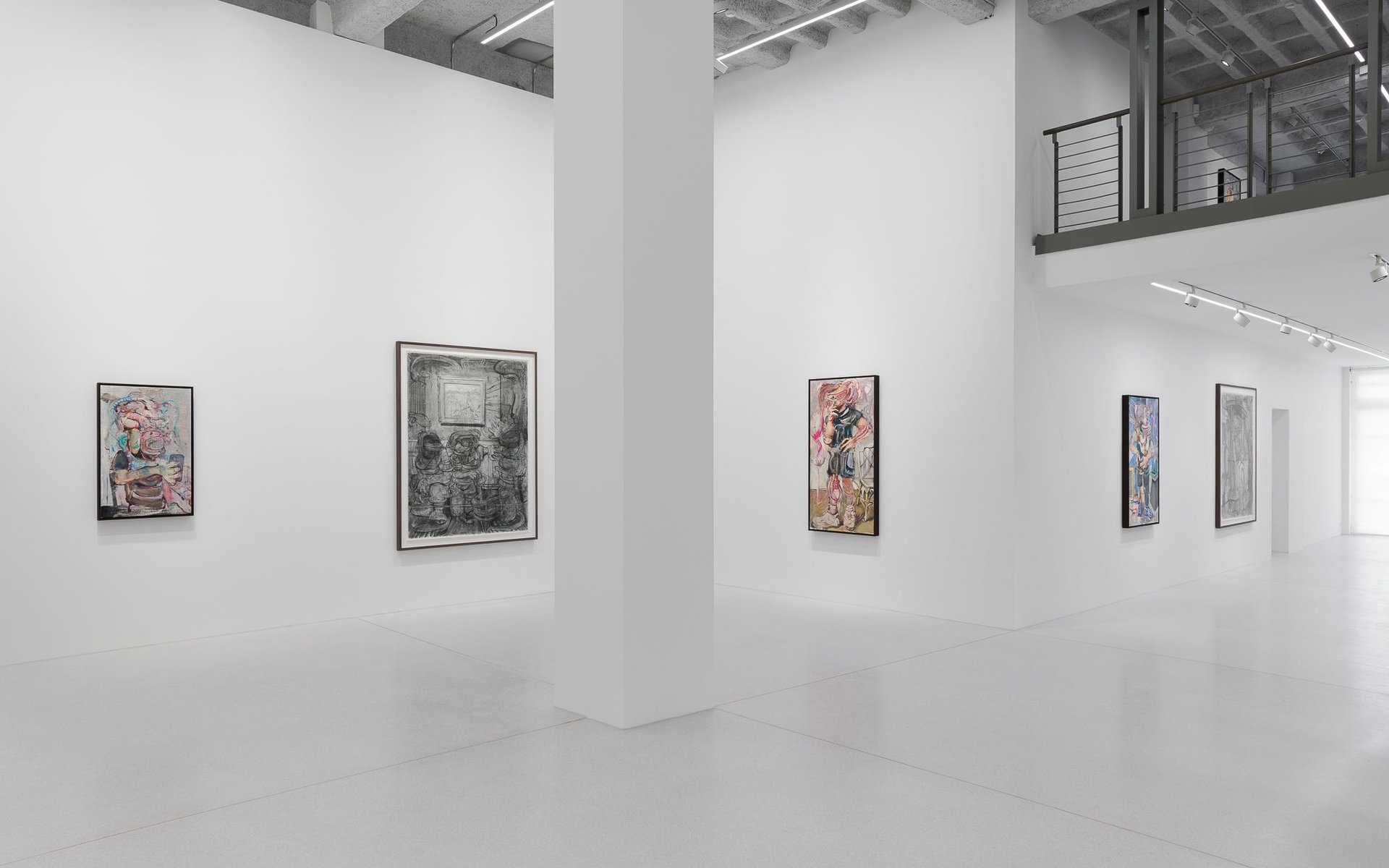
Installation of Adrian Ghenie in Plan B's new Berlin gallery
Courtesy of Galeria Plan B
Adrian Ghenie, Plan B, Strausberger Platz 1, 10243 until 13 May
Plan B honours its roots—as well as the most lucrative artist on its roster—by opening its new space with works by the Berlin-based Romanian painter Adrian Ghenie. The megawatt market darling from Cluj has a long history with the gallery, having founded it as a project space in 2005 with his fellow artist and friend Mihai Pop.
For Ghenie's fifth solo exhibition with Plan B, his recent paintings take over the two-storey space located in the Haus Berlin tower on Strausberger Platz. The building, which was designed in the 1950s by the chief architect of East Berlin Hermann Henselmann, is part of the wider Magistrale complex that is currently shortlisted for Unesco World Heritage status. The figures in these works, made during and informed by the Covid-19 pandemic, are envisioned as time travellers, and join the wider cast of Ghenie's signature twisted and morphing humanoids that populate his canvases. Included in the exhibition is a charcoal drawing based on the widely circulated images of climate activists from Ultima Generazione (last generation) throwing a can of soup on Van Gogh’s The Sower (1888) at the Palazzo Bonaparte in Rome last year.
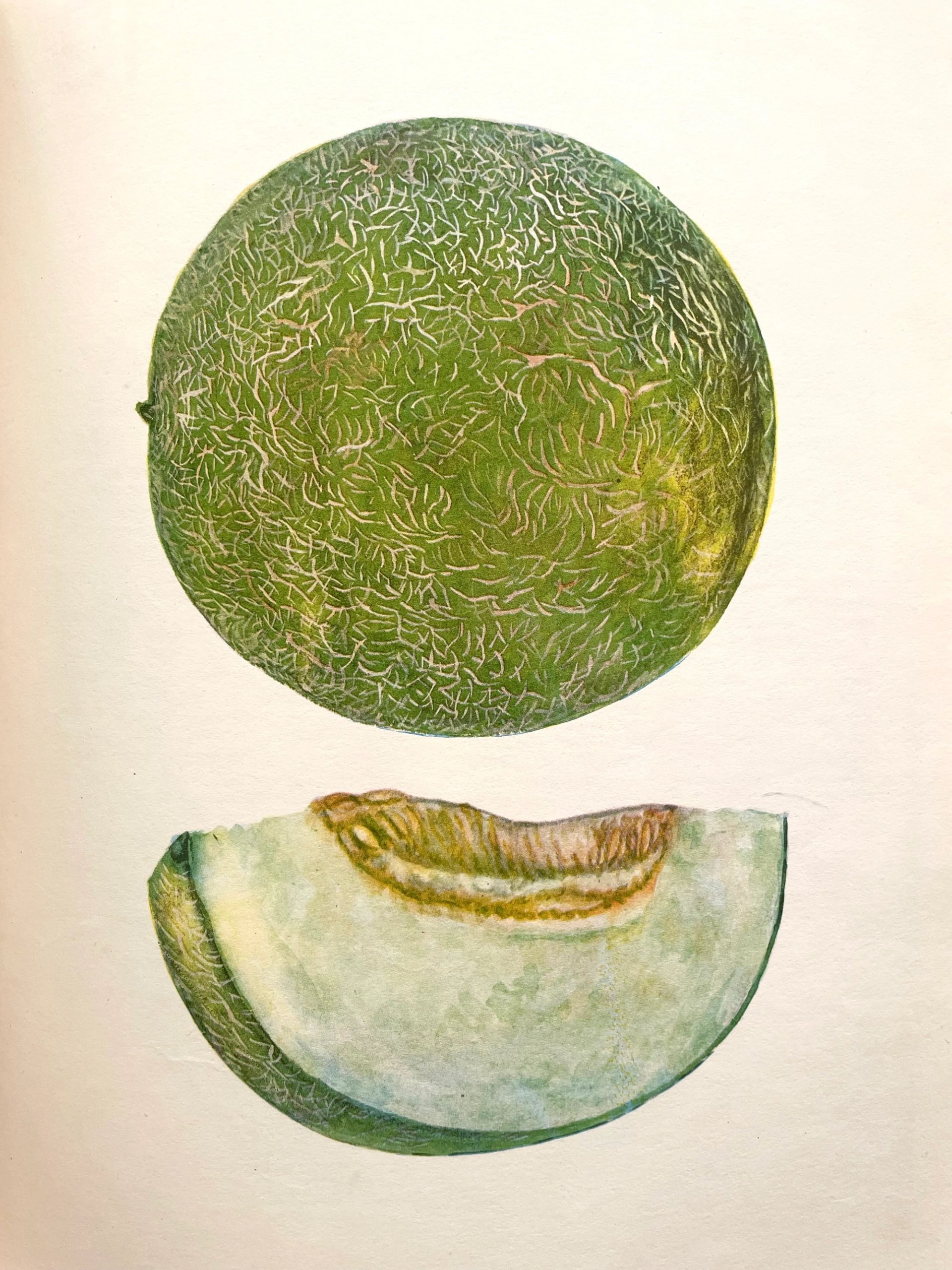
Slavs and Tatars's Hang Don't Cut (2023)
Courtesy of the artists and Kraupa-Tuskany Zeidler
Slavs and Tatars feat. Andrey Anro, Dozie Kanu, Mina Masoumi, Lin May Saeed: Hang Don’t Cut, Kraupa-Tuskany Zeidler, Kohlfurter Strasse 41/43
10999, until 29 June
The Berlin-based art collective-cum-ethnographic research group Slavs and Tatars, whose focus on the vast intracontinental region of Eurasia has won them the favour of biennials across the globe, return for their third show at Kraupa-Tuscany Zeidler. Here they present a series of glass spheres resembling winter melons—a fruit loaded with symbolism in Central Asia, particularly in Uzbekistan and Xinjiang, where their veined surfaces are thought to form unique, cryptic codes that make them repositories of knowledge. A second part of this exhibition features works by four artists who are longstanding collaborators of Slavs and Tatars: Andrey Anro, Dozie Kanu, Mina Masoumi, Lin May Saeed.
The exhibition will also feature performances in the "slavic aperitivo bar-cum-project" space Pickle Bar, opened by Slavs & Tatars next to their studio in the city's Moabit district. On 28 April, at 19:00 local time, the Berlin-based Cypriot artist Krista Papista will perform Fucklore: Bellringers, reviving a ritual practised by women who wore the bells of their lost sheep during carnivals in the Cyprus and Aegean Islands. Online booking required.
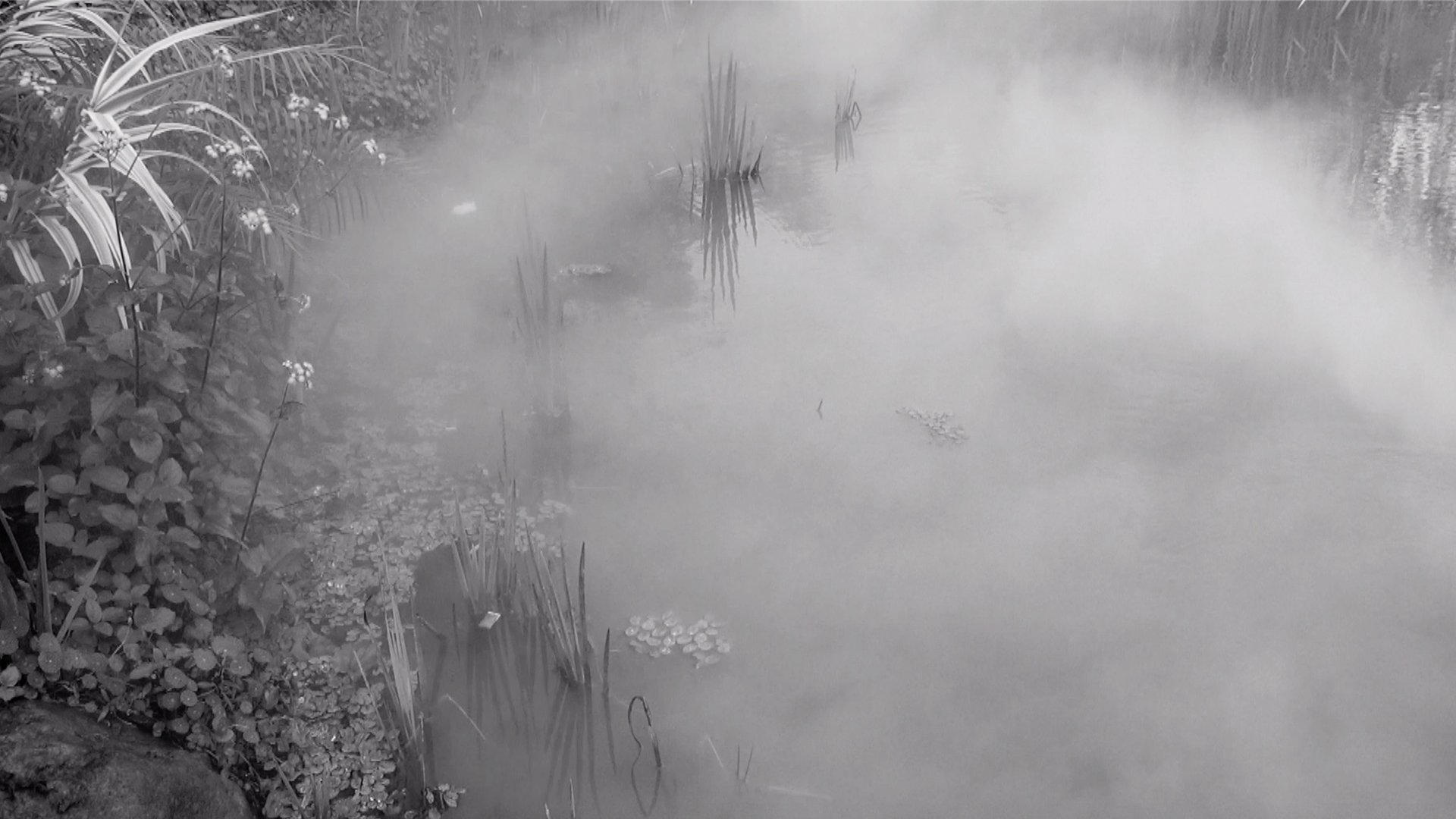
Still from Sixty Seconds of Wonderland Park (2019),
Chen Dandizi: Hollow Garden, Hua International, Potsdamer Str. 81B, 10785, until 15 July
The recently founded gallery Hua International, set up in 2020 with spaces in Berlin and Beijing, makes its GWB debut with a solo show of three video installations and new sculptures by the 30-year-old Chinese artist Chen Dandizi. Her videos relate to the natural jungle environments of southern China, where she is from, and how they interact with human responses to rapid urbanisation. One video work shows residents of a resort town, in which urban parks have replaced the jungle, waiting for an artificial pond to spray mist across the landscape. "The Anthropocene is a topic everywhere, but in China, it is so extreme," says the gallery's founder Xiaochan Hua. "The whole country is developing so fast that these huge cities are built up seemingly overnight. Dizi's videos show the humour and absurdity of these cities creating false nature parks to make up for what is missing."
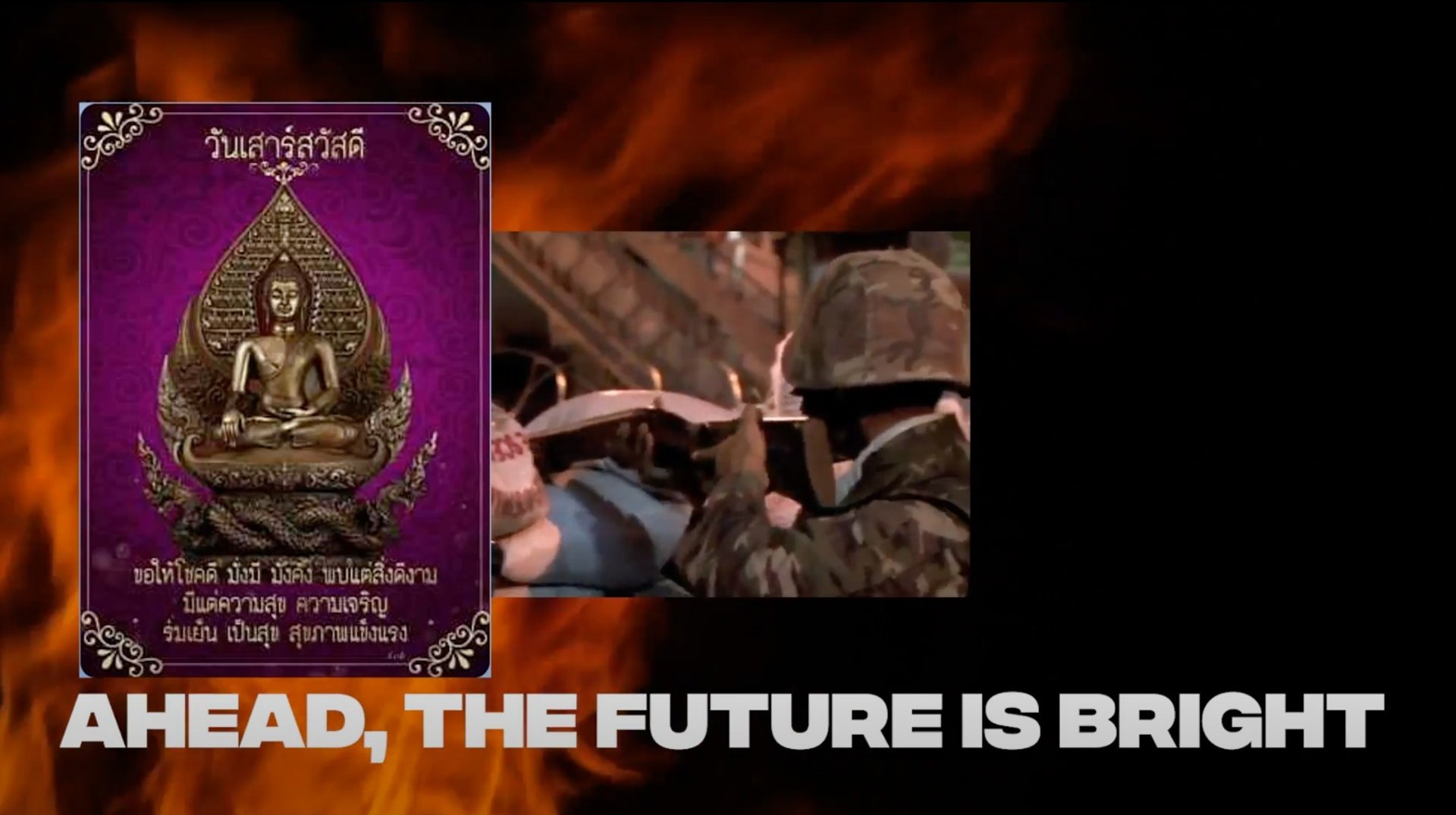
Still from Pisitakun Kuantalaeng's NAK-SU-TU-LI-DIN (2022)
+Dede presents: Vanishing Point, in collaboration with Lola Göller and Sellerie Weekend, location via Instagram, 28-29 April
Of course, it wouldn't be a Berlin art event if the city's curators simply programmed inside white cubes, and this year sees a number of parallel exhibitions take place in project spaces and non-traditional venues.
Perhaps the most unorthodox comes courtesy of the curatorial collective +Dede, which presents a karaoke exhibition inside a Volkswagen Golf. The premise is as follows: seven artists have submitted video works and written songs with original lyrics to accompany. Visitors locate the car via Instagram, queue up and, when admitted inside, choose a song and sing along. While the vehicle will be stationary for the most part, +Dede co-founder Tristan Deschamps says that it is likely that police will ask them to relocate, meaning if you are lucky enough, your "car-a-oke" session will become a mobile one.
Despite the levity of the concept, the installation nonetheless provides a platform for pressing social issues. One video in particular, by the exiled Thai artist Pisitakun Kuantalaeng, mixes footage he captured from recent peaceful and violent protests in Bangkok against Lèse-majesté laws, and is accompanied by lyrics that call for collective resistance against tyranny.
This automobile art installation is part of the inaugural Sellerie Weekend—a concurrent but unaffiliated programme to GWB—which brings together around 50 project spaces across the city. Its organisers say in a statement that theirs is "not a counter-action to GWB, but rather aims to draw attention to the diverse programme of Berlin's independent art scene".
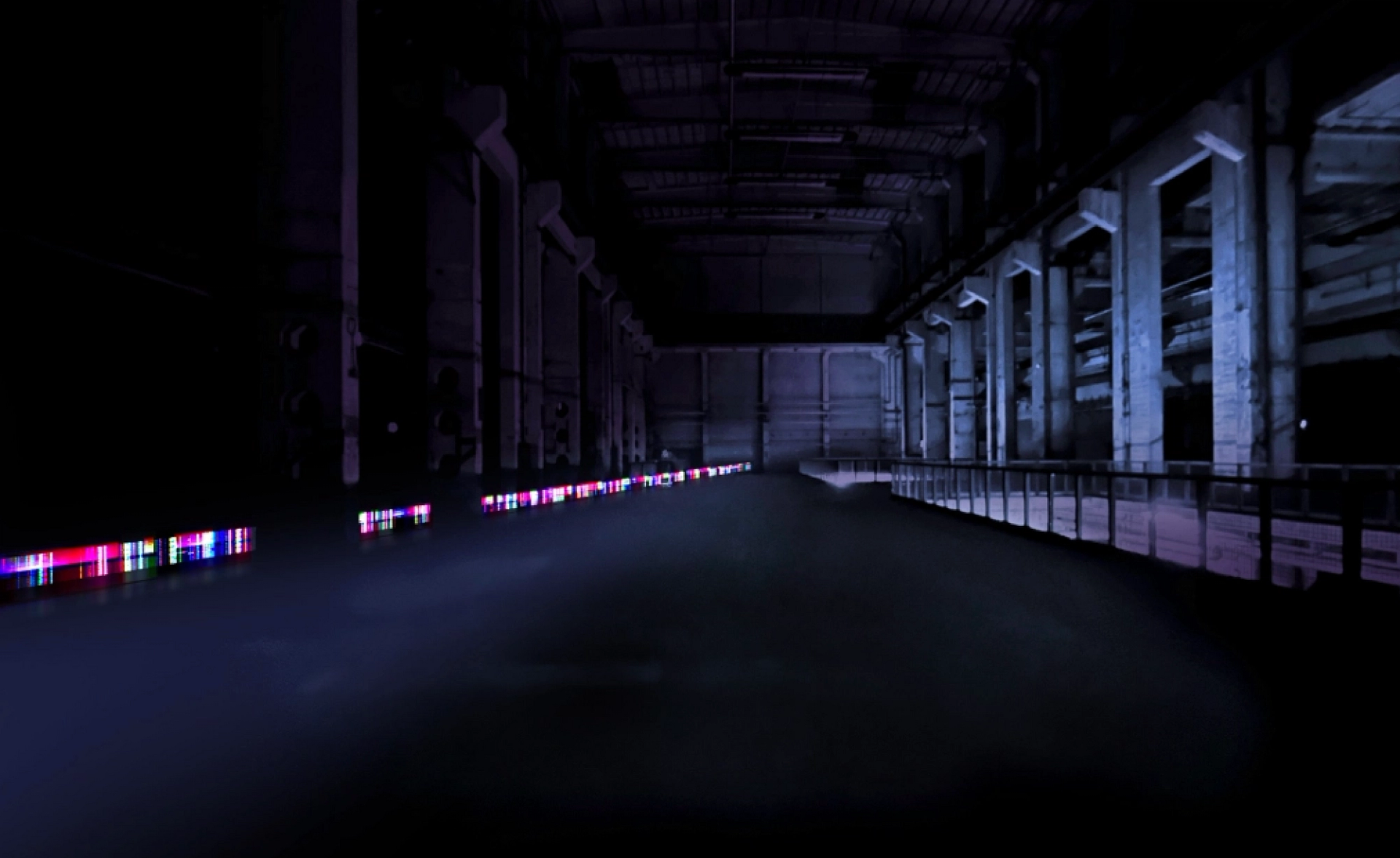
Installation view of Serghei and Arotin's Infinite Screen at Kraftwerk, Berlin
Courtesy of Kraftwerk Berlin
Serghei & Arotin: Infinite Screen, Kraftwerk, Köpenicker Str. 70, 10179, until 30 April; tickets €15, book online
The cavernous space of Kraftwerk, a former East German power plant whose west wing is now home to the techno nightclub Tresor, is difficult to show art in. Soaring ceilings higher than most cathedrals and few light sources swallow up much visual complexity, making bright, simple works better. Luckily, that is exactly the new media duo Serghei and Arotin have provided with the installation Infinite Screen—iterations of which have been exhibited at the Venice Biennale and the Centre Pompidou. These modular light-based sculptures are now assembled to stretch from one end of the space to the other, and are programmed to seem as though a beam of light, roughly in time to a heartbeat, shoots across them, briefly illuminating the darkness and making the vast space momentarily smaller. "We programmed this work inside of this bunker-like building. With a war still raging on in Ukraine, we wanted to foreground the importance of bringing light into darkness," Serghei says.


